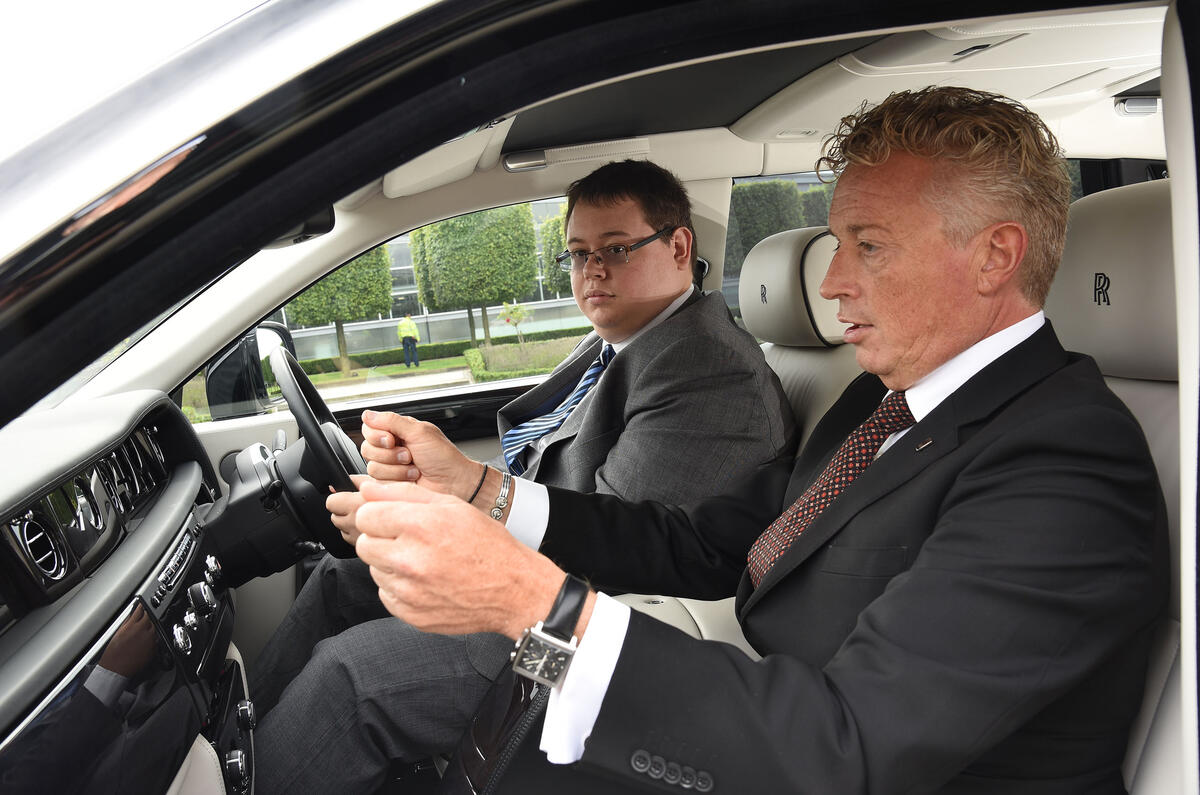The back pages of Autocar looked very different in 1915. Squeezed between all the classified ads for mechanics and engineers were large sections advertising chauffeurs.
Here, young men posted ads “seeking situations” with employers. One was my own great-grandfather, a professional butler whose job included ferrying his employer, the ninth Earl of Shaftesbury, around the country on visits.
Which got me thinking: do I have what it takes to become a professional chauffeur in the modern era? Step forward Rolls-Royce. It still trains professional drivers in the art (and etiquette) of chauffeuring, under the banner of White Glove Training, although it’s currently an exclusive service available to high-profile customers only.
My trainer is Andi McCann, the man asked for by name to drive Rolls-Royce boss Torsten Müller-Ötvös in the UK and abroad. He’ll adopt the Autocar star rating system to see if I have what it takes.
First things first: we need to go for a drive, so we borrow an extended-wheelbase Rolls-Royce Phantom and head for the roads surrounding Rolls-Royce’s Goodwood headquarters to allow McCann to assess my base driving level.
I’m nervous and McCann isn’t giving anything away. We choose a short route with plenty of roundabouts and obstacles to see how I handle the 2670kg, V12-engined Phantom, and I try to be as smooth as possible. Balance the throttle to prevent any lurching movement, steady the brake as we stop, no sudden movements.
I think I’m doing well as we turn back onto Rolls-Royce property. McCann hands me a three-star rating. That, according to the back pages of this magazine, means I’m average in most areas and outstanding in none. Room for improvement, then.
We go right back to basics, including the proper way to open the car’s mammoth doors and the correct procedure for shielding a female passenger from the prying lenses of the paparazzi on arrival at a major event.
That procedure involves keeping the rear doors locked – some paparazzi will try to open these doors on arrival, says McCann – as we arrive, before I get out and walk around to the passenger side.
I then reach into the front passenger door to retrieve the famous Rolls-Royce umbrella from its holder, before unlocking the rear doors.I stand in front of the opening to protect my passenger’s dignity, opening the umbrella to mask the camera flashes. When the passenger is ready, she’ll tap me on the shoulder and together we move forward, and it’s only then that my role is complete.




































Join the debate
Add your comment
Look at this way
Of course, that is unlikely to happen in most circumstances - but if reducing any risks of sudden braking for smoothness is paramount, you can see why you might do that...
Personally. I find being berated for being six seconds late more of an eybrow raiser; unless it was a matter of life and death, you have to wonder about the mental state of the berater.
Back to Basics
It amazes me that anticipation isn't a prerequisite for an Autocar road tester. This is basic stuff!
Back to basics indeed
I was a chauffeur for a few years and tried to never stop unless there was no choice. The further you look ahead, the less you need to do.